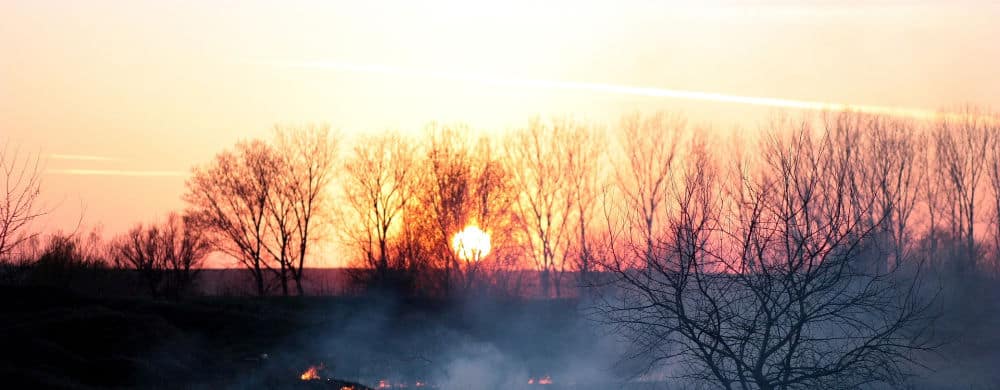Australia has a rich natural ecosystem but it’s also one of the driest continents on earth. Each year, many areas experience bushfires which impact people, homes and wildlife. Recently, these fires have covered a much larger area, with millions of hectares burnt.
During the cleanup process, there are many different things to consider, from removal of debris and cleaning out water systems, through to removing smoke odours from clothing and furniture.
Because solar panels are more exposed to the elements, it’s highly likely smoke and ash buildup will impact their efficiency. Solar panels only work at peak efficiency when they’re clean and can fully absorb the sun’s rays.
There are a few different things you can do to check and clean your panels, although we always recommend talking to a professional if the system has not been regularly maintained, or appears damaged in any way.
1. Remove any shading
Damaged or overgrown trees need to be removed or trimmed if they shade your panels. Trees may bend or break due to weather or fire events, and it’s important to make sure they aren’t impacting your solar. A small amount of shade on even one cell can lead to reduction in that panel’s power by a third at least, which is replicated by all of the other panels in that string, or electrical group.
Track the shading over different times of day and different seasons to make sure the panels have direct sunlight for as long as possible during daylight hours. If nearby trees have burnt, it’s also important to monitor regrowth over the following months.
2. Clean leaves from under the panels
Being proactive is an important step in protecting your solar system, and should be something you do when undertaking steps to protect the rest of your property.
You may have already cleaned out the leaf litter in your gutters, but many people don’t think about the buildup that can happen under panels. If you’re in a high risk area, ensure there’s no debris left underneath the panels that could catch on fire from flying sparks. Leaves, as well as birds nests and other flying debris, can build up under the panels and become a fire hazard.
3. Wash with a hose
A good wash with some soapy water and a hose can remove any buildup and residue from smoke and ash. We recommend not going onto your roof to clean without appropriate safety height equipment. Cleaning the panels first thing in the morning, when they’re covered in dew, can make the task easier but beware, as the roof can be more slippery. Avoid cleaning the panels during the hottest parts of the day as the water will evaporate much more rapidly in the heat and there is a small risk of the panels cracking from thermal contractions. Late afternoons are probably the best time to clean the panels.
- DON’T use a pressure washer.
- DO clean with a soft broom if necessary.
- DON’T go onto the roof, clean from beside the roof, or hire a professional.
4. Clean Ash off regularly
Ash from forest fires is thick and blocks out sunlight from reaching your panels, greatly reducing energy efficiency. Cleaning the ash off your panels regularly, is the best option to ensure you still maintain productivity in your solar system. You may be able to dry brush small amounts of ash off the panels, but for larger amounts, simply using water and a hose is the best option. You may need to clean the panels off daily, especially if large amounts of ash are blowing onto the panels. Although rain may clean off some of the ash, this may also make it stick to the panels, so it’s important to check that they’re clean, even after a storm.
Depending on the type of trees and other products that are burned by the fires, ash may vary in consistency and stickiness. Sometimes extra elbow grease is required, but you should avoid harsh abrasives cleaning products.
5. Keep birds away
During bushfires, it’s not unusual for large numbers of birds and animals to be displaced from their natural habitat. Sometimes, your roof may be the location they choose to rest. Birds may fly over the panels, or choose to nest under them at night time. Unfortunately, large amounts of bird faeces can cause just as much efficiency loss as shade can. Be careful not to do anything that may attract more birds near your panels.
If you want to offer food and water to birds, make sure there’s ample resting space in a location away from the roofed area, so the birds are less likely to nest near or on the solar panels.
6. Check frayed or exposed parts on your inverter
Although good quality inverter brands are made to stand up to Australian weather conditions, they still have limitations, and you want to ensure your inverter is working every day.
Although you should never touch or change any of the settings on your inverter, you can still look for any obvious issues. If you see a red light during the day, case damage or hear loud buzzing or clicking, contact your solar installer for advice and maintenance.
7. Use Solar Monitoring
Being able to track your solar usage over time means you can see any loss in efficiency due to smoke, ash or other problems. Checking your monitoring app regularly means you can identify and nip any problems in the bud, or at least be aware of issues caused by factors such as smoke, and prepare for any increases in your next power bill. We recommend one of the leading monitoring systems on the market, Solar Analytics, which integrates with almost every type of solar system.
Live panels can be deadly if they’re in faulty condition. Not willing to take the risk? We always recommend using a licensed professional to do a thorough clean, check and maintenance visit every two years.

